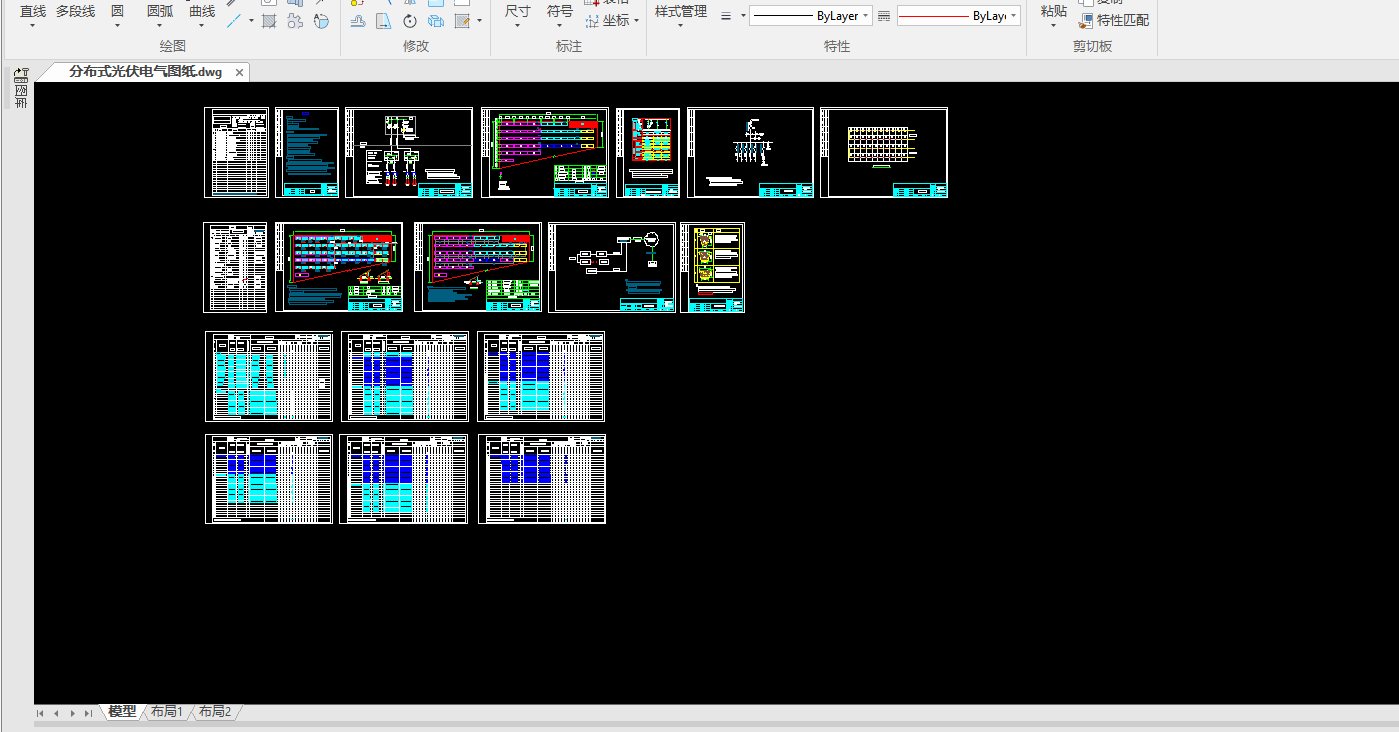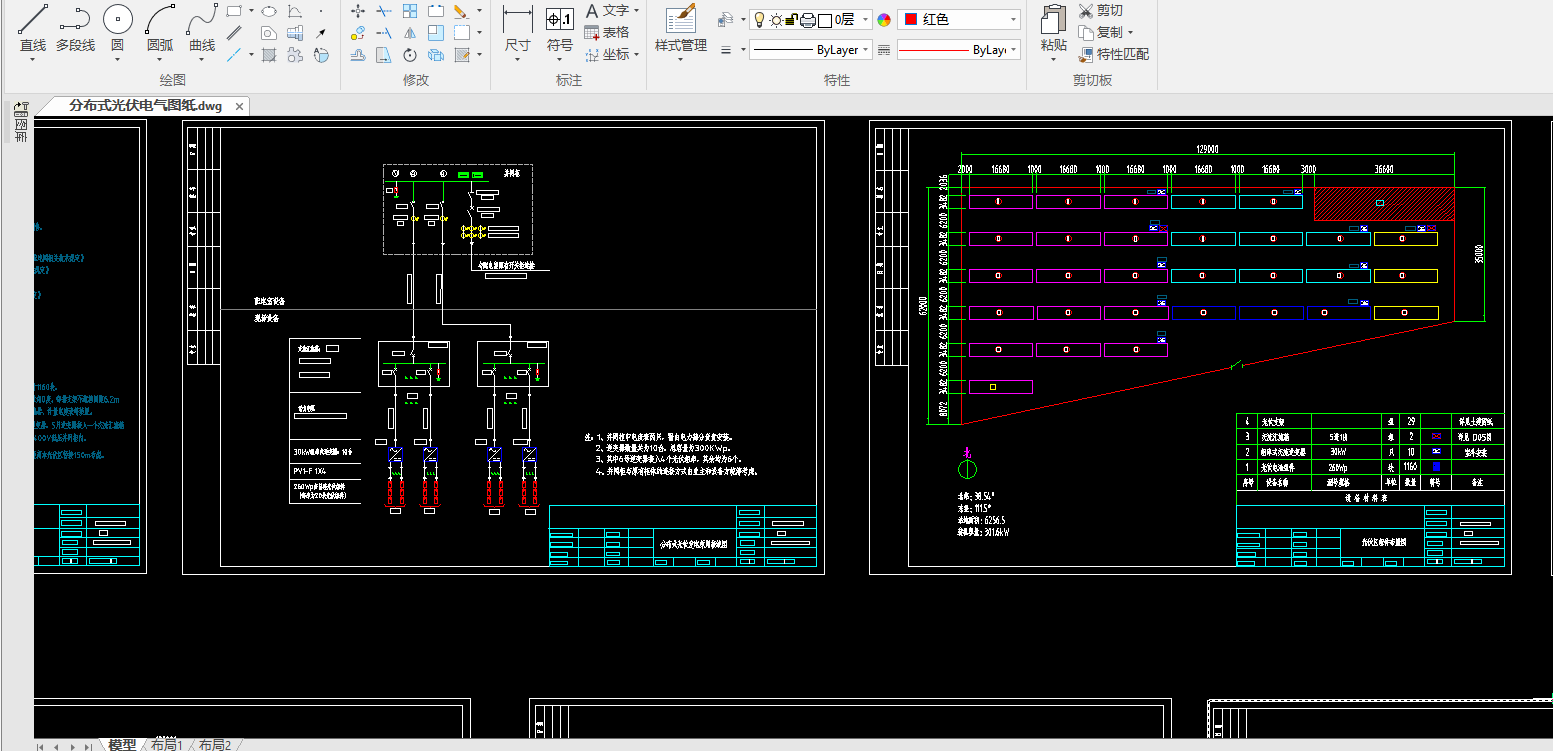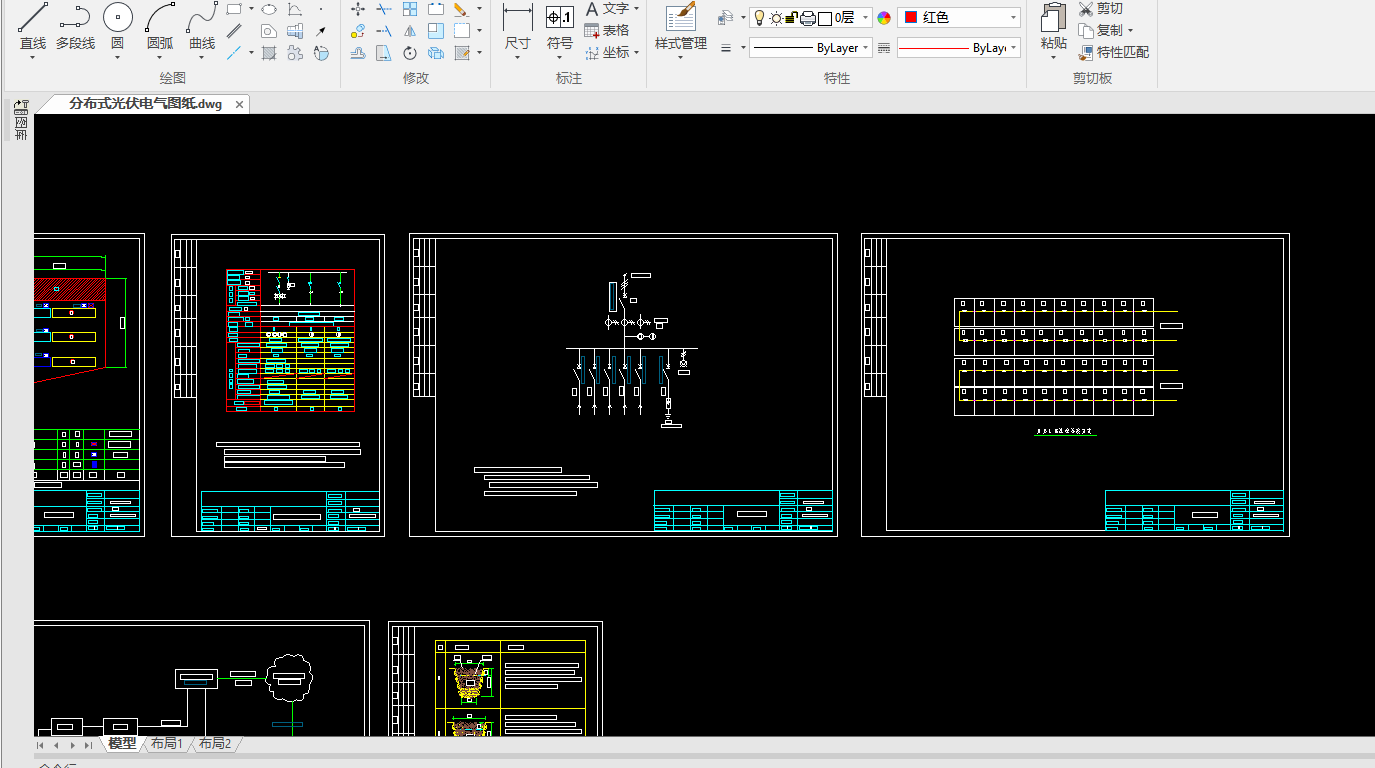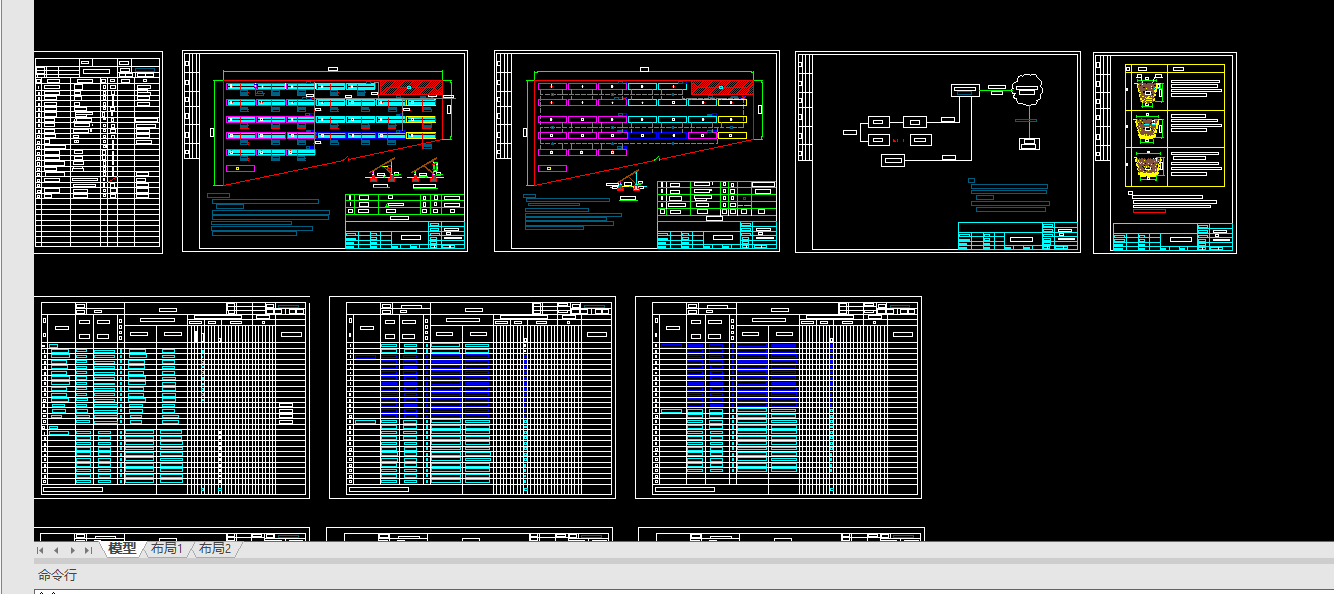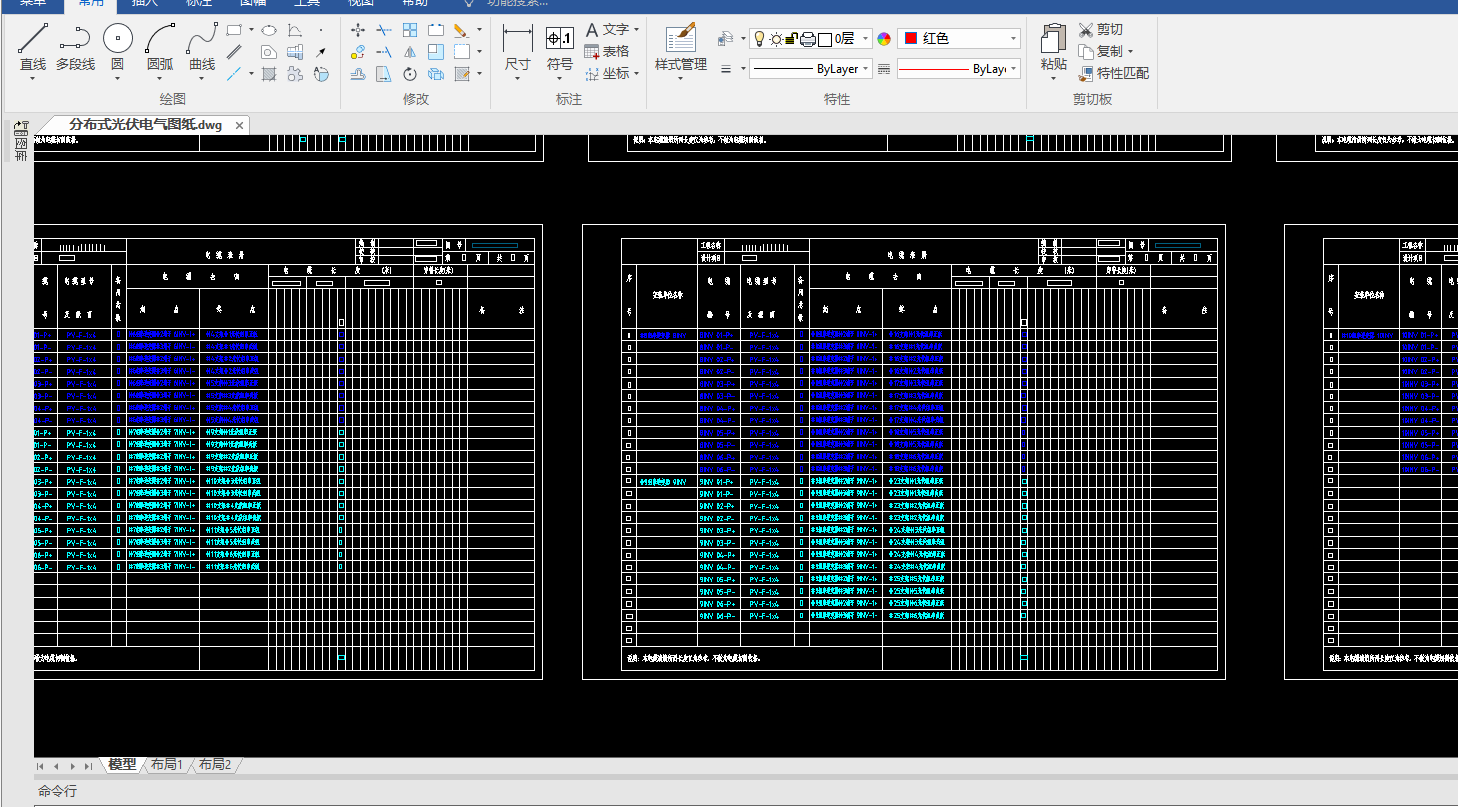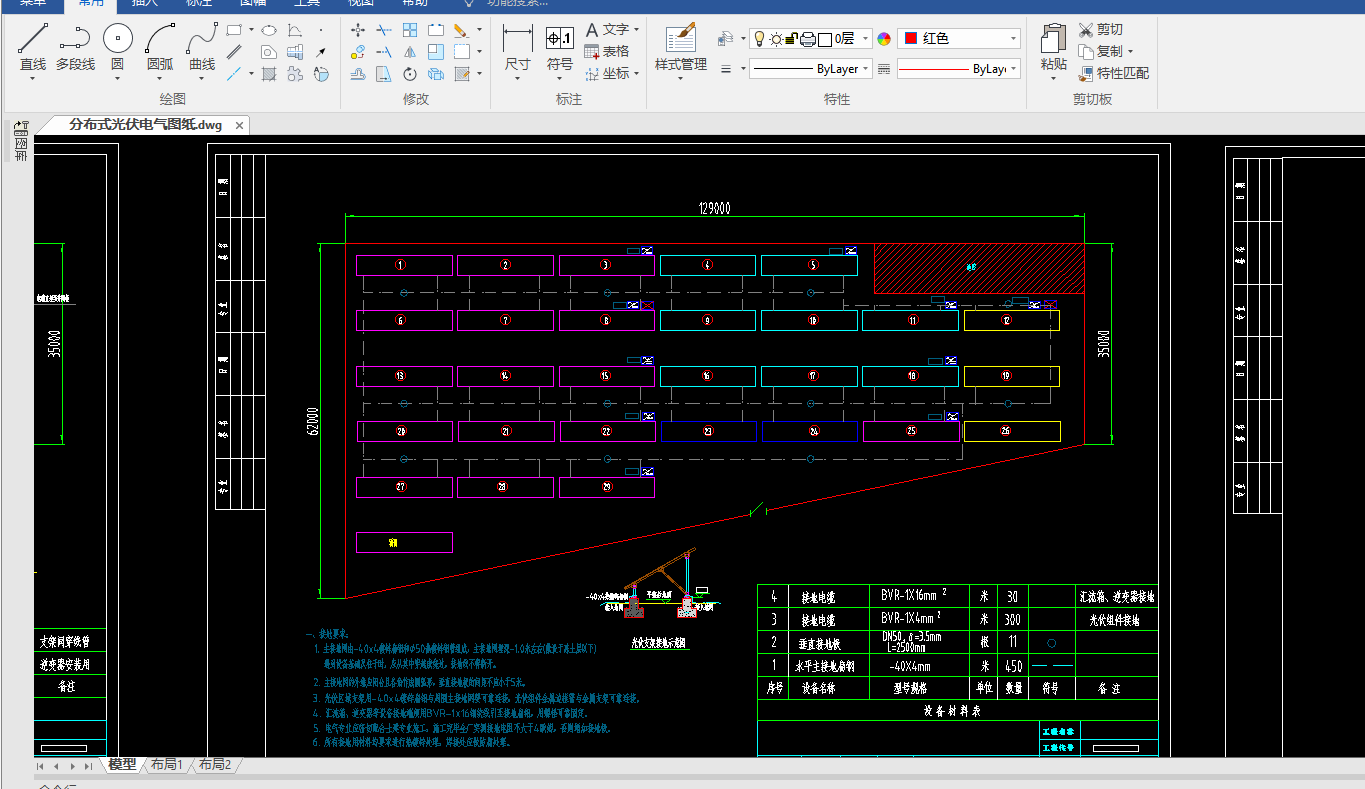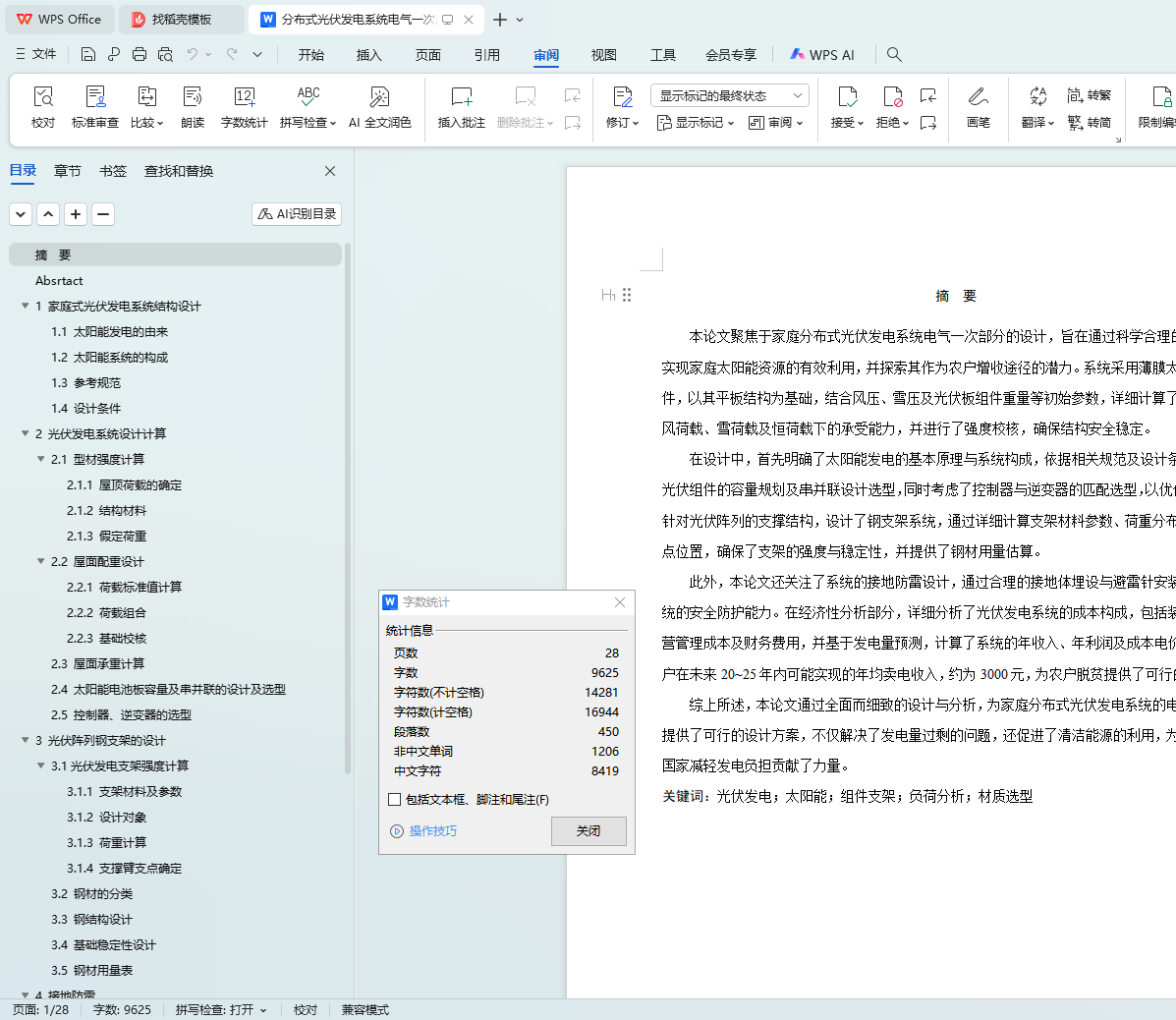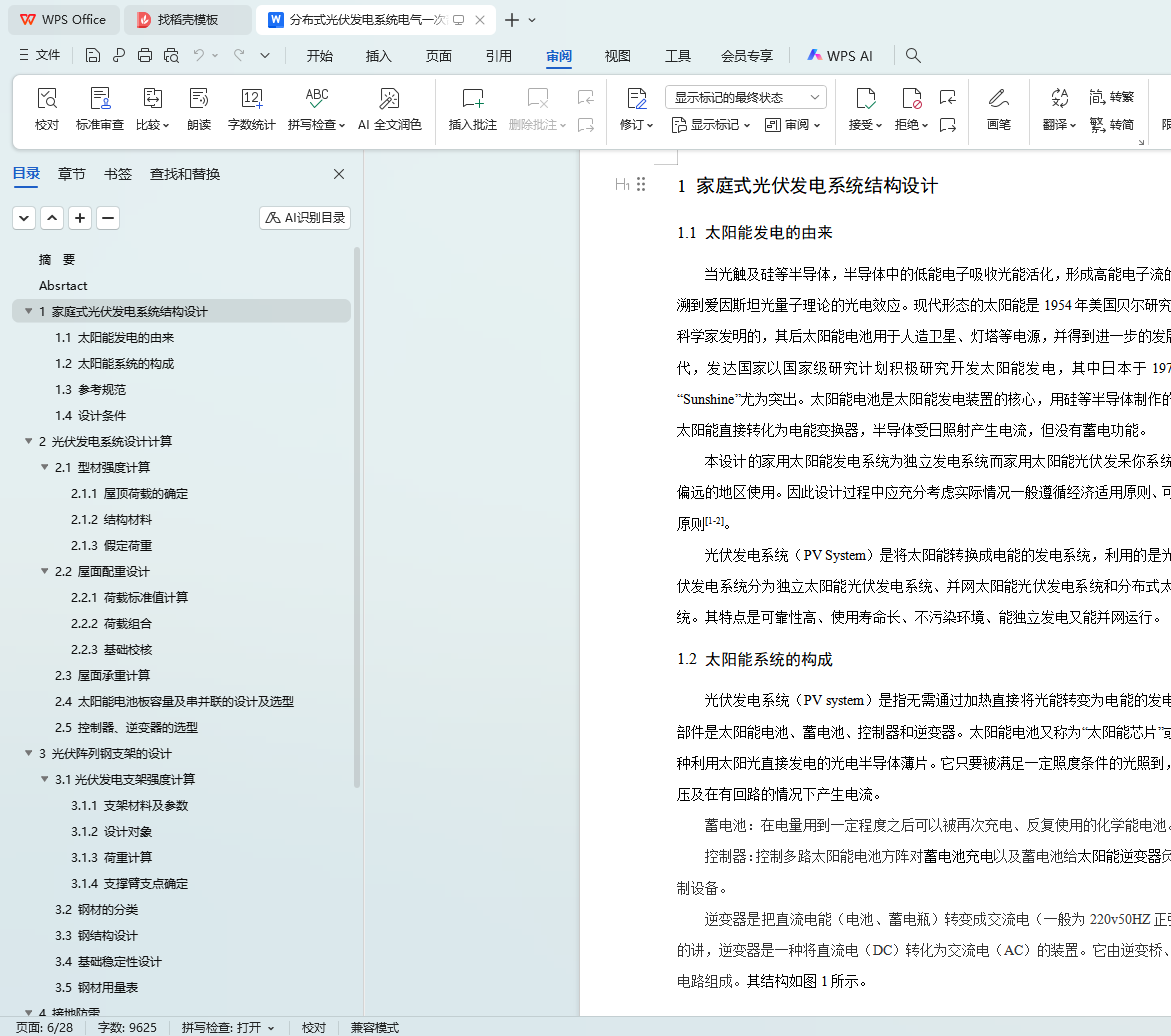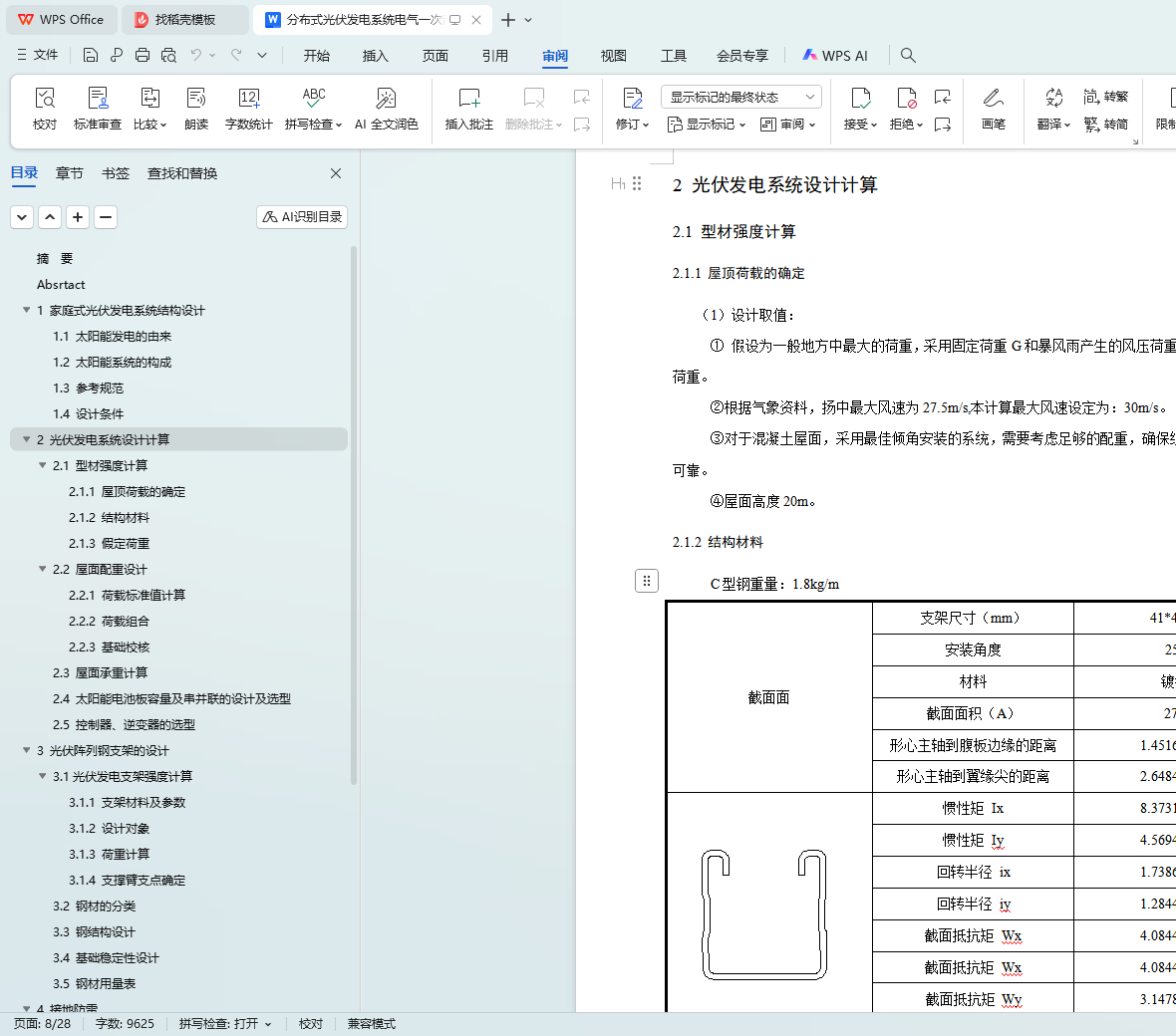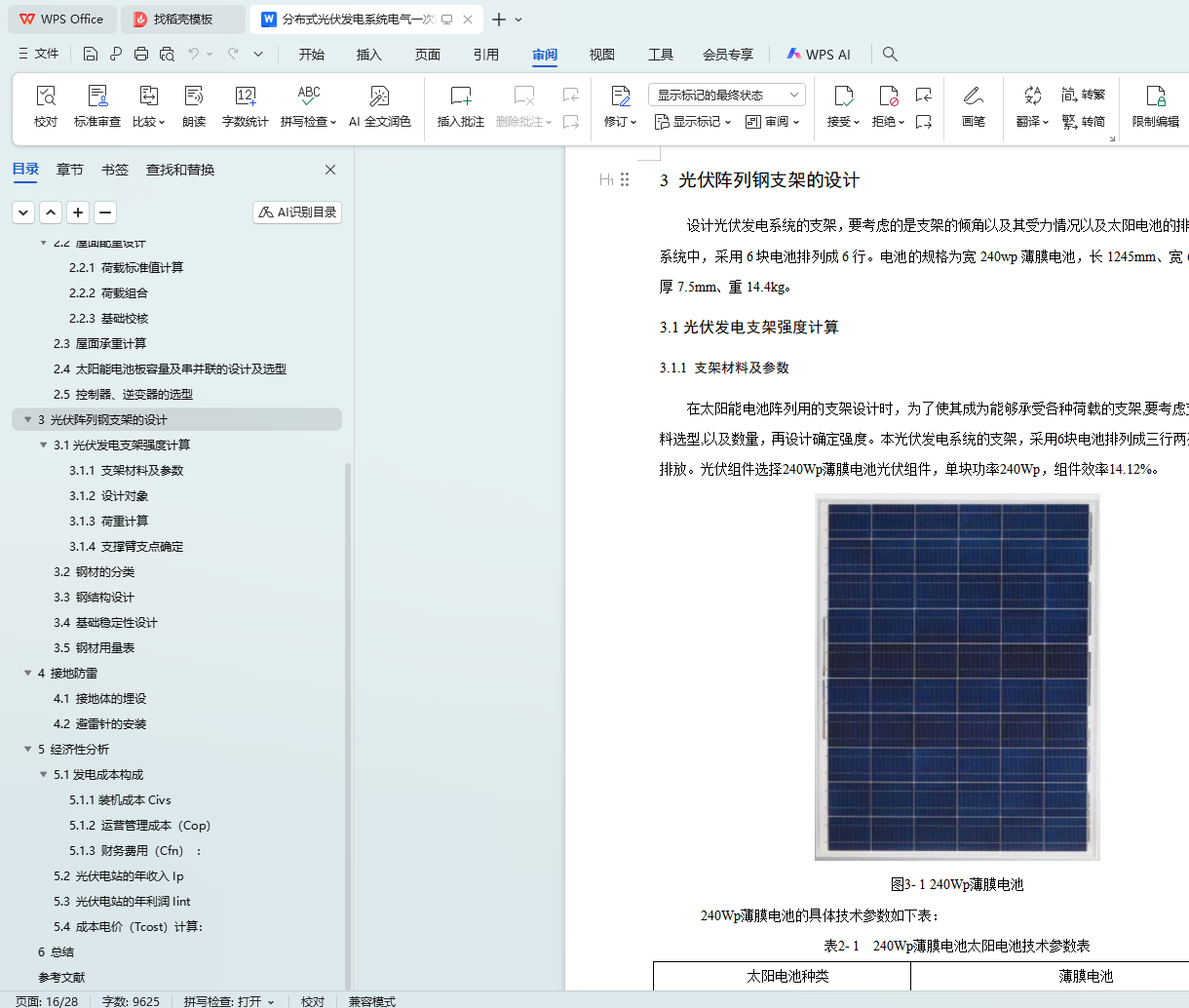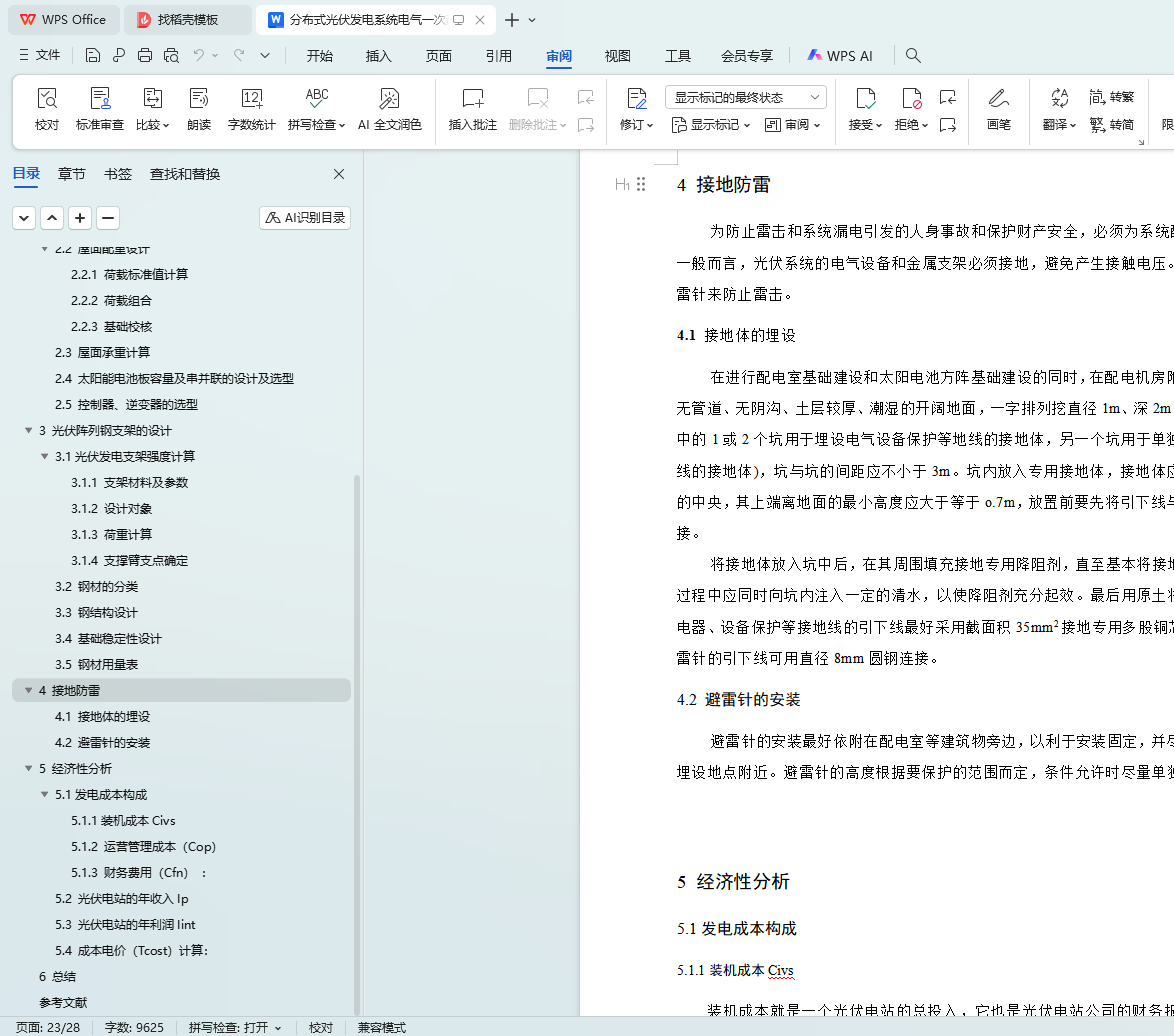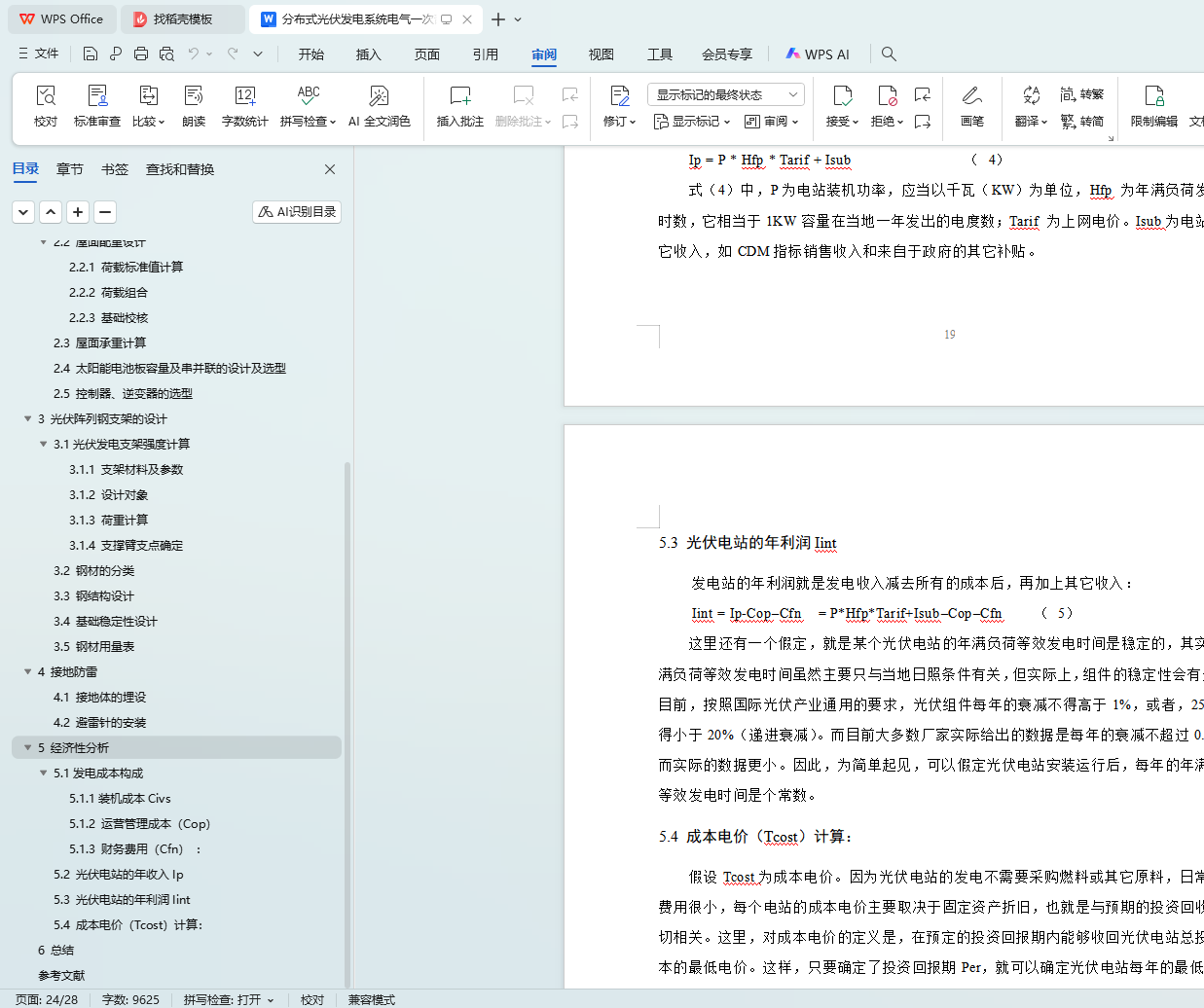摘 要
本论文聚焦于家庭分布式光伏发电系统电气一次部分的设计,旨在通过科学合理的系统设计,实现家庭太阳能资源的有效利用,并探索其作为农户增收途径的潜力。系统采用薄膜太阳能光伏组件,以其平板结构为基础,结合风压、雪压及光伏板组件重量等初始参数,详细计算了方阵在标准风荷载、雪荷载及恒荷载下的承受能力,并进行了强度校核,确保结构安全稳定。
在设计中,首先明确了太阳能发电的基本原理与系统构成,依据相关规范及设计条件,进行了光伏组件的容量规划及串并联设计选型,同时考虑了控制器与逆变器的匹配选型,以优化系统性能。针对光伏阵列的支撑结构,设计了钢支架系统,通过详细计算支架材料参数、荷重分布及支撑臂支点位置,确保了支架的强度与稳定性,并提供了钢材用量估算。
此外,本论文还关注了系统的接地防雷设计,通过合理的接地体埋设与避雷针安装,提高了系统的安全防护能力。在经济性分析部分,详细分析了光伏发电系统的成本构成,包括装机成本、运营管理成本及财务费用,并基于发电量预测,计算了系统的年收入、年利润及成本电价,预测了农户在未来20~25年内可能实现的年均卖电收入,约为3000元,为农户脱贫提供了可行的经济路径。
综上所述,本论文通过全面而细致的设计与分析,为家庭分布式光伏发电系统的电气一次部分提供了可行的设计方案,不仅解决了发电量过剩的问题,还促进了清洁能源的利用,为农户增收及国家减轻发电负担贡献了力量。
关键词:光伏发电;太阳能;组件支架;负荷分析;材质选型
Absrtact
This paper focuses on the design of the electrical primary part of the household distributed photovoltaic power generation system, aiming to realize the effective use of household solar energy resources through scientific and reasonable system design, and explore its potential as a way to increase farmers' income. The system uses thin film solar photovoltaic modules. Based on its flat plate structure, combined with the initial parameters such as wind pressure, snow pressure and the weight of photovoltaic panel modules, the bearing capacity of the square array under the standard wind load, snow load and constant load is calculated in detail, and the strength check is carried out to ensure the safety and stability of the structure.
In the design, the basic principle and system composition of solar power generation are clarified. According to the relevant specifications and design conditions, the capacity planning and series and parallel design selection are carried out. At the same time, the matching selection of the controller and the inverter is considered to optimize the system performance. According to the support structure of photovoltaic array, the steel support system is designed. Through detailed calculation of the material parameters, load distribution and fulcrum position of the support, the strength and stability of the support are ensured, and the estimate of steel consumption is provided.
In addition, this paper also focuses on the grounding lightning protection design of the system, through the reasonable grounding body embedding and lightning rod installation, improve the safety protection ability of the system. In economic analysis, detailed analysis of the cost of photovoltaic power generation system, including installed cost, operation management costs and financial expenses, and based on power forecast, calculate the system's annual income, profit and cost price, predict the farmers in the next 20~25 years may achieve the annual average of selling electricity income, about 3000 yuan, provides a feasible economic path for farmers out of poverty.
To sum up, through comprehensive and detailed design and analysis, this paper provides a feasible design scheme for the electrical part of the household distributed PHOTOVOLTAIC power generation system, which not only solves the problem of excess power generation, but also promotes the utilization of clean energy, and contributes to the increase of farmers' income and reducing the burden of power generation in the country.
Key words: photovoltaic power generation; solar energy; module support; load analysis; material selection
目 录
1 家庭式光伏发电系统结构设计
1.1 太阳能发电的由来
1.2 太阳能系统的构成
1.3 参考规范
1.4 设计条件
2 光伏发电系统设计计算
2.1 型材强度计算
2.1.1 屋顶荷载的确定
2.1.2 结构材料
2.1.3 假定荷重
2.2 屋面配重设计
2.2.1 荷载标准值计算
2.2.2 荷载组合
2.2.3 基础校核
2.3 屋面承重计算
2.4 太阳能电池板容量及串并联的设计及选型
2.5 控制器、逆变器的选型
3 光伏阵列钢支架的设计
3.1光伏发电支架强度计算
3.1.1 支架材料及参数
3.1.2 设计对象
3.1.3 荷重计算
3.1.4 支撑臂支点确定
3.2 钢材的分类
3.3 钢结构设计
3.4 基础稳定性设计
3.5 钢材用量表
4 接地防雷
4.1 接地体的埋设
4.2 避雷针的安装
5 经济性分析
5.1发电成本构成
5.1.1装机成本Civs
5.1.2 运营管理成本(Cop)
5.1.3 财务费用(Cfn) :
5.2 光伏电站的年收入Ip
5.3 光伏电站的年利润Iint
5.4 成本电价(Tcost)计算:
6 总结
参考文献

